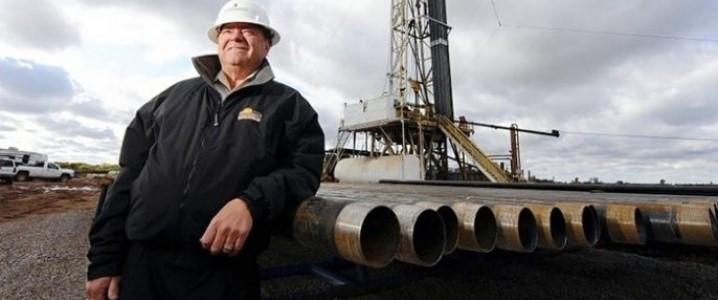Authored by Nick Cunningham via Oilprice.com,
U.S. shale production growth could slow by as much as half this year, according to one industry titan.
Continental Resources’ Harold Hamm said that shale growth could decline by as much as 50 percent this year compared to 2018, although he added that it was just a “wild guess.” Hamm said that a lot of shale E&Ps are trying to keep spending within cash flow. This newfound mantra of capital discipline has been imposed on the shale industry after a decade or so of a debt-fueled drilling frenzy.
“Producers have become more disciplined in their approach to capex,” Hamm said at the Argus Americas Crude Summit in Houston this week.
“Several years back growth was a huge consideration. That consideration has been much less. The peak consideration now has been – are you overspending cash flow. Are you living within cash flow?”
The signs of a shale slowdown have been mounting. The rig count fell sharply in recent weeks. Production growth has already begun to slow. Schlumberger, the world’s largest oilfield services company, has warned that it is already seeing shale companies pulling back on drilling activity.
In the latest Drilling Productivity Report, the EIA forecasts that U.S. shale production will grow by 62,000 bpd in February compared to a month earlier. That is the slowest rate of growth in nearly a year, and down from the prior monthly production increases that have consistently exceeded 100,000 bpd.
Argus, using Barclays data, points out that North American onshore might only tick up by about 9 percent this year, down from the 18 percent jump in 2018. That could quickly translate into slower output growth.
“Production is a direct response of capex today with this industry,” Hamm said at the Argus summit.
“The more money that you inject the more you are going to extract.”
Hamm said that the “sweet spot” for the shale industry is about $70 per barrel, which is high enough for growth by not so high as to overheat.
Meanwhile, a few shale executives at the World Economic Forum in Davos, Switzerland also said that the U.S. shale industry could slow this year.
“I believe not as much money will be pouring into the Permian basin this time. I believe investors will hold companies accountable for returns and a lot of this didn’t happen previously,” Occidental CEO Vicki Hollub said.
The potential disappointment from the shale patch could help tighten up the market, and also compensate for lagging OPEC compliance.
“If the production cuts are not consistently implemented, the oil market risks remaining oversupplied – unless US oil production increases by a lesser degree than expected on account of the sharp price falls in the fourth quarter,” Commerzbank said in a note.
“The first signs of this are visible: drilling activity has been falling for some weeks already.”
Even looking out over the medium-term, shale has problems. Hess’ CEO John Hess said that shale will “flatten out” in the mid-2020s.
“Shale is not the next Saudi Arabia. It is an important short-cycle component,” he said at the World Economic Forum, according to Reuters.
On the other hand, Rystad Energy just published a forecast suggesting that U.S. oil and liquids production could exceed that of both Russia and Saudi Arabia combined by 2025, surpassing 24 million barrels per day. The United States, having regained its position as the world’s top liquids producer in 2014, is poised to accelerate into a league of its own over the next six years and eclipse the collective output of its two closest rivals by 2025,” said Rystad Energy partner Artem Abramov. “Some market participants have voiced concerns about a possible depletion in resources from core parts of major liquids basins in the US. But there are no indications that such a development will occur any time soon,” Abramov noted.
Whether that turns out to be the case remains to be seen. But in the short run, there are mounting signs that the shale industry is tapping on the brakes, responding to lower oil prices by slowing down on drilling activity.
via ZeroHedge News http://bit.ly/2sL4SxO Tyler Durden
